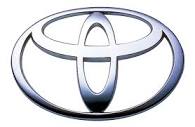T100 Pickup 2WD V6-3.4L (5VZ-FE) (1996)
/Page-951001.png)
Cruise Control: Description and Operation
Current is applied at all times through STOP fuse to TERMINAL 1 of the Cruise control ECU and TERMINAL 2 of stop light SW.
With the Ignition SW turned to ON, current flows through GAUGE fuse to TERMINAL 8 of Cruise Control Indicator Light [Comb. Meter]. The
current through ENGINE fuse flows to TERMINAL 14 of the Cruise Control ECU. When the Ignition SW is ON and the Cruise Control SW [Comb.
SW] is turned ON, a signal is input from TERMINAL 7 of the Cruise Control SW [Comb. SW] to TERMINAL 4 of the Cruise Control ECU. As a
result, the Cruise Control ECU functions and the current to TERMINAL 14 of the Cruise Control ECU flows to TERMINAL 13 --> GROUND, and
the Cruise Control system is in a condition ready for operation.
At the same time, the current through the GAUGE fuse flows from TERMINAL 8 of Cruise Control Indicator Light [Comb. Meter] --> TERMINAL 6
--> TERMINAL 5 of the Cruise Control ECU --> TERMINAL 13 --> GROUND, causing the Cruise Control indicator light to light up, indicating that
the Cruise Control is ready for operation.
1. SET OPERATION
When the Cruise Control SW [Comb. SW] is turned ON and the set SW [Comb. SW] is pushed with the vehicle speed within the set limit
(Approx. 40 kph, 25 mph to 200 kph, 124 mph), a signal is input to TERMINAL 18 of the Cruise Control ECU and the vehicle speed at the time
the set SW is released is memorized in the ECU as the set speed.
2. SET SPEED CONTROL
During Cruise Control driving, the ECU compares the set speed memorized in the ECU with the actual vehicle speed which is input into
TERMINAL 20 of the Cruise Control ECU from the vehicle speed sensor (speed sensor) [Comb. Meter], and controls the Cruise Control
Actuator to maintain the set speed.
When the actual vehicle speed is lower than the set speed, the ECU causes the current to the Cruise Control Actuator to flow from TERMINAL
12 --> TERMINAL 6 of the Cruise Control Actuator --> TERMINAL 7 --> TERMINAL 11 of the Cruise Control ECU. As a result, the motor
in the Cruise Control Actuator is rotated to open the throttle valve and the throttle cable is pulled to increase the vehicle speed.
When the actual driving speed is higher than the set speed, the current to the Cruise Control Actuator flows from TERMINAL 11 of the ECU -->
TERMINAL 7 of the Cruise Control Actuator to rotate to close the throttle Valve and return the throttle cable to decrease the vehicle speed.
3. COAST CONTROL
During the Cruise Control driving, while the coast SW is ON, the Cruise Control Actuator returns the throttle cable to close the throttle valve and
decrease the driving speed, the vehicle speed when the coast SW is turned OFF is memorized and the vehicle continues at the new set speed.
4. ACCEL CONTROL
During Cruise Control driving, while the Accel SW is turned ON, the Cruise Control Actuator pulls the throttle cable to open the throttle valve and
increase the driving speed.
The vehicle speed when the Accel SW is turned OFF is memorized and the vehicle continues at the new set speed.
5. RESUME CONTROL
Unless the vehicle speed falls below the minimum speed limit (Approx. 36 kph, 23 mph) after cancelling the speed by the cancel SW, pushing the
resume SW will cause the vehicle to resume the vehicle speed set before cancellation.
6. MANUAL CANCEL MECHANISM
If any of the following operations occurs during Cruise Control operation, the safety Magnetic Clutch of the Actuator turns OFF and the motor
rotates to close the throttle valve and the Cruise Control is released.
*
Placing the shift lever in except "D" position (Park/Neutral Position SW ON). "Signal input to TERMINAL 2 of the ECU" (A/T)
*
Depressing the clutch pedal (Clutch SW ON). "Signal input to TERMINAL 2 of ECU"
*
Depressing the brake pedal (Stop light SW ON). "Signal input to TERMINAL 16 of ECU"
*
Pulling the Parking Brake lever (Parking Brake SW ON). "Signal input to TERMINAL 3 of ECU"
*
Pushing the cancel SW (cancel SW ON)."Signal input to TERMINAL 18 of the ECU"
7. AUTO CANCEL FUNCTION
a. If any of the following operating conditions occurs during Cruise Control operation, the set speed is erased, the current flows to safety
Magnetic Clutch is stopped and the Cruise Control is released. (Main SW turns OFF). When this occurs, the Ignition SW must be turned OFF
once before the main SW will turn ON.
*
Over current to transistor driving motor and/or safety Magnetic Clutch.
*
Current to control the throttle valve in motor becomes always ON".
*
Open circuit in Safety Magnetic Clutch.
*
Momentary interruption of vehicle speed signal.
*
Short circuit in Cruise Control SW.
*
Motor does not operate despite the motor drive signal being output.
